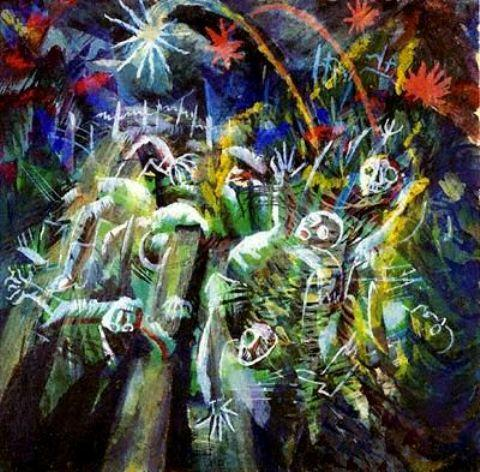I have just seen @1917 with some of my #WWI students at @BCHistoryDept. A few disorganized thoughts on the film to follow.
In general I thought it was very well put-together; it follows the Saving Private Ryan model of depicting a smaller human drama within the larger bewildering war. This narrative move does a good job managing the complexity of the topic for the viewer.
The timing of the action is very interesting - the characters are haunted by the memory of the Somme a year earlier, and are headed (which they suspect but do not know for certain) toward another completely hellish catastrophe at Passchendaele in the coming summer.
On a similar note it is curious to call this film "1917" which seems as if it& #39;s getting you to think about a moment in time. But normal viewers will not have a ton of info or priors on what this moment is or means. 1917 is a very grim "between" moment in the course of the war.
"Between," that is, the hoped-for knockout punch of 1916 that failed to land, and the real culminating drama of 1918. Macrohistorically it& #39;s a year for which you& #39;d think about American entry and the Bolsheviks. The film is unconcerned with all this, but it& #39;s still called 1917.
(This is not meant to be a confounding criticism by the way, just a thoughtful aside.)
I was enthused that @1917 depicted an Indian (Sikh) soldier, an experience and perspective that is not often represented in western media on #WWI. My colleague @KateImy2 has a great thread on this you should read (as well as her book!): https://twitter.com/KateImy2/status/1216719255418363904">https://twitter.com/KateImy2/...
On the military-operational side of things, I appreciated the way the film invoked different dimensions of the German strategic withdrawal to the Siegfriedstellung/Hindenburg Line: the booby traps, the scorched earth, the confusion and uncertainty about how to react.
On the aesthetic side, I had two pretty strong reactions at key moments, and both hinged on invocations of the art of Otto Dix.
The first was the scene in which Schofield is running through the ruined village at night as it is periodically illuminated by flares. I have always found night-flares in #WWI really captivating and have long tried to imagine what they must have looked like.
These flare rounds hung in the air, and burned things like magnesium to create an extremely stark, vivid wash of light. Imagine driving by a roadside construction site at night and seeing those uncannily bright lights, and you can get a partial sense of this.
The effect of seeing this kind of stark (and fleeting) illumination in No Man& #39;s Land must have been uniquely horrifying. Otto Dix depicted it in "Lichtsignale" - a painting that is shockingly colorful in comparison to his other work. It& #39;s a stunning piece.
Mendes did a good job giving the viewer a taste of this in the village scene. I appreciated the experience that scene created.
The other invocation of Otto Dix that struck me during @1917 came from Schofield& #39;s interaction with the woman and baby in the basement. I immediately thought of Dix& #39;s "Die Irrsinnige von St. Marie-a-Py" - which I will not copy here because it it& #39;s distressingly grotesque.
It depicts essentially the same circumstances - a woman and a baby in a bombed-out French village. Thankfully the outcome for the characters in the film was (as far as we know) better than that of the characters in the drawing, but the similarity is striking all the same.
Both the film and Dix& #39;s work depict a surreal admixture of beauty and grotesqueness to get the viewer to apprehend the "truth" of the war. Whereas the film offers the viewer a sense of consolation in these human interactions, Dix doesnt. Humanity is wholly unredeemed for him.
On "Wayfaring Stranger" - I found this incredibly striking (as an American southerner) albeit pretty surprising. Unfortunately I totally lack the expertise to tell you whether it& #39;s plausible some Tommy would have known this song in 1917, let alone performed it before going OTT.

 Read on Twitter
Read on Twitter


